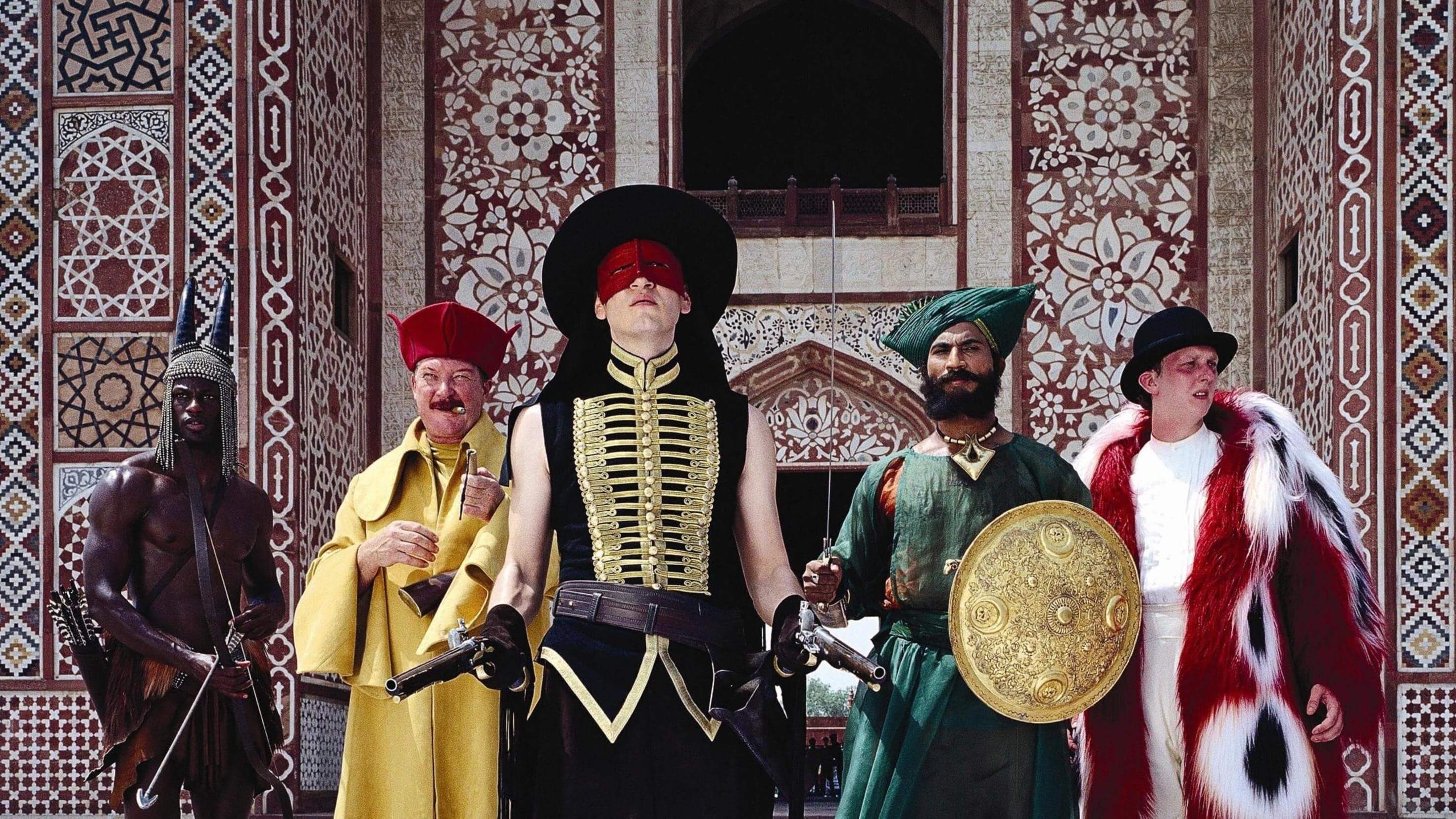It’s a great time to revisit Tarsem’s divisive 2006 masterpiece, The Fall
If you enjoyed Ryan Gosling in The Fall Guy, check out Lee Pace giving a different era of stunt performers their flowers in The Fall

If The Fall had come out this year, you might wonder if the 2006 cult classic and David Leitch’s The Fall Guy were born from the same prompt at a writers’ workshop. Beyond the mirrored titles, the divisive labor of love from Tarsem Singh (known professionally as Tarsem) shares an oddly similar jumping-off point with the new Ryan Gosling flick.
Both The Fall and The Fall Guy center on dejected stuntmen contending with the loss of their girlfriend and their sense of identity after suffering a devastating injury on the job. Both end in montages highlighting the under-appreciated labor of stunt performers and use a story-within-the-story as a vehicle for their emotionally-stunted protagonists to fully communicate their feelings. Both represent the fulfillment of a years-long quest for their respective directors: Leitch, a former stuntman himself, has been working diligently to get fellow performers more recognition and maybe their own Oscar one day, while Tarsem self-financed his project and shot it piecemeal over four years in more than 24 different countries. Both are steeped in reverence for the craft of filmmaking and pay homage to those that came before.
But while The Fall Guy is a poppy, accessible, afternoon snack of a movie, The Fall is anything but. On its surface, this dichotomy is unfortunately literal. The Fall is next to impossible to buy from services like Amazon and Apple TV or to stream anywhere, at least legally. (Singh reached out to Criterion to distribute the film, but they said no.) Your best bet is to get your hands on an old Blu-ray copy, but even those will set you back at least $75 on eBay. Googling won’t really help you either—you’ll have to wade through a lot of results about Gillian Anderson’s 201os series of the same name (no relation) or 2022's tall pole thriller Fall (even less relation).
I’m saying all of this up front so you can manage your expectations, because what you’ll find if you are lucky enough to secure a copy (or you’re reading this in the future after Criterion screws its head on straight) is a bold and beautiful mess of a masterpiece, as intimate and personal as it is impossibly grand. Anchored in a 1915 Los Angeles hospital, the story follows paralyzed and bedridden stuntman Roy (the ever-delightful Lee Pace), who attracts the adulation of 5-year-old fellow patient Alexandria (first and only-time actress Catinca Untaru).
Seeking to end his life, Roy sees an opportunity to secure the necessary pills in his young and somewhat able-bodied protégé, one he exploits by spinning a fantastical yarn of love and revenge that ends up entrancing them both. The film flips between the muted reality of the hospital and the technicolor dream-world of Roy’s story, painted through a dizzying number of gorgeous on-location shots from around the globe, and some once-in-a-lifetime costume work by Eiko Ishioka. Just watch this one awesome transition and you’ll probably get the picture. (Warning: This might ruin lesser shots, like the Game Of Thrones dragon wings, for a little while after. It’s pretty tough to beat.)
But as stated above, The Fall is not without its detractors. Even though it features a healthy dose of swordplay, pyrotechnics, and elephant-based aquatic escapes, it’s about as far removed from the breezy antics of its modern counterpart as stunt performers currently are from award contention. (The Academy has really got to fix that one, huh?) The Fall is the self-serious masterwork of a self-serious auteur, one that cannot escape the weight of these labels even in its most light-hearted moments. Even then, these mostly occur at the beginning of the film, as Pace deftly acts around his young co-star’s mostly-improvised chatter; for better or worse, it’s all Tarsem by the end. In a 2008 interview with Minnesota Public Radio, he described the project as “a Western happening in India through a Ukrainian girl,” so that’s a pretty good taste of just how many balls are in the air here.
Another modern comparison is coming up soon, as we’ll soon see whatever the hell Francis Ford Coppola’s Megalopolis is when it premieres at Cannes later this month. Both films took a similar path to the screen, even if Coppola’s took approximately ten times as long to finally arrive. While he didn’t have any vineyards to sell off, Tarsem’s version of that financial sacrifice was to take commercial work for a while, but only in countries he also wanted to use for The Fall. That way, according to that MPR interview, he could cover costs along the way and fly actors out to shoot on location whenever his day job was done. That level of personal care is palpable in every line of dialogue and every set-piece that feels plucked straight out of a well-read child’s wildest fantasies. The film is often unwieldy, but so breathtaking in its earnestness that it’s hard not to buy in by the end. In her original 2008 review, A.V. Club writer Tasha Robinson called the project “pretentious to the point of laughability.” Later, she named it one of her top films of the year. Both can be true.
If all of this isn’t enough to at least pique your interest, this fact might put it over the edge. Tarsem is also the guy behind one of the greatest bits of pop culture history to ever grace our screens: I’m talking, of course, about the 2004 Pepsi commercial featuring Beyoncé, Britney Spears, and Pink singing “We Will Rock You” in full gladiator garb at the Colosseum. If you’re not at least a little bit curious about a feature-length film from that beautiful brain, then we have nothing left to say to each other.